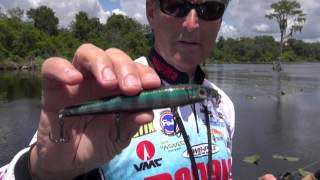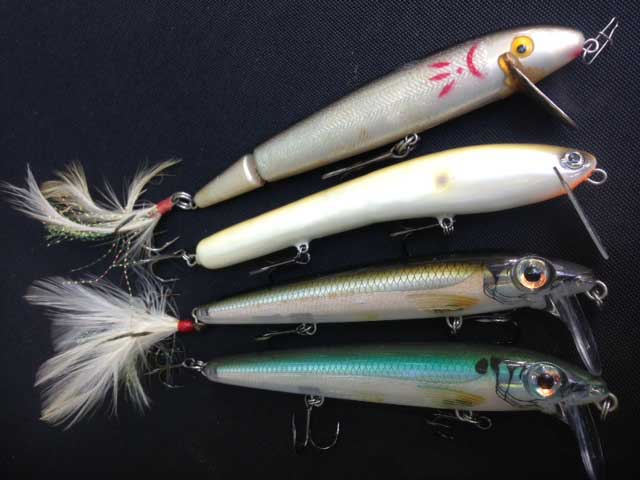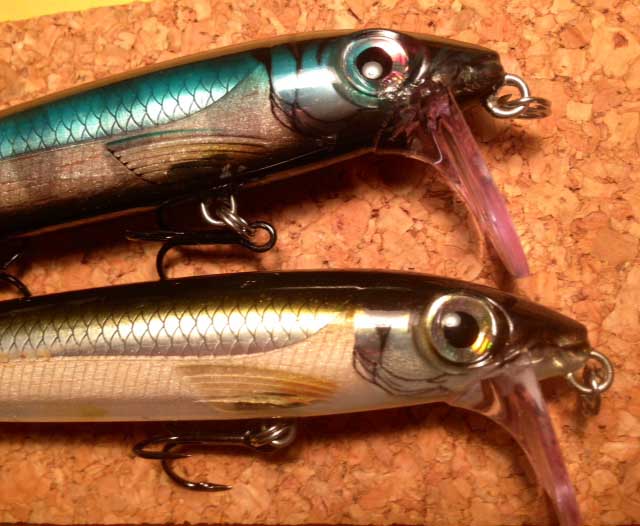
All of us love topwater fishing. That’s a given. Where many of us part ways is on which type of topwater to throw. Some like plugs with props, others prefer those that pop, still others want to walk the dog. And let’s not forget buzzbaits, they have a strong following, too.
With all these variations to choose from, you’d think we have it covered. But there is one other category well worth considering and that is wake baits.
No other surface lure performs quite like a wake bait. With their unique tail-wagging, side-to-side motion, these lures create a surface swagger bass rarely see — and it can fool all species, including largemouth, spots and smallmouth.
From the Beginning
My first exposure to wake baits came while competing in a B.A.S.S. event on Sam Rayburn Reservoir in the late 1980s. My partner was former Texas pro Robert Tucker, an angler well versed on Lone Star lakes.
I remember the bite being extremely tough, and as a result, Tucker went through a variety of lures and techniques. Almost out of ideas, he tied on a Cordell Redfin Minnow and that’s when things changed … at least for Tucker. Waking the lure over flooded bushes, he taught me a lesson I’ll never forget.
Some years later, while fishing an early springtime tournament on Beaver Lake, Tom Mann Jr. suggested I try waking a Bomber 15A. He said it was good at coaxing suspended bass, even in cold, pre-spawn conditions — and he was right!
The water was gin clear, and the bass were holding in the tops of submerged cedars, within 10 feet of the surface. It was so simple. All you had to do was wake the lure over enough trees and in no time you’d be culling to a good limit. It worked for both spots and largemouth, too.
Nearly a decade later, the Bassmaster Elite Series visited several Carolina lakes, including Murray and Clarks Hill. There the bass were schooling on blueback herring, and again, a wake bait proved to be the perfect choice.

In these events, I used the Buckeye Wake Up — a light, buoyant bait with a very distinctive wobble. The pattern was so solid I could follow behind other competitors and frequently catch larger fish.
To the Present
This summer, when Rapala introduced its new BX Waking Minnow, curiosity drove me to experiment further. I spent hours fishing the bait in both fresh and saltwater, and as a result, it has become my favorite waking lure. Here’s why.
In Florida, most of our water is clear and shallow. Consequently, the fish are easily spooked, so long-distance presentations are sometimes essential — especially with topwaters. Because of the Waking Minnow’s unique construction (a balsa body encased in hard plastic), it has the weight for distance casting, yet the perfect amount of buoyancy to swim seductively across the surface.

This is advantageous anytime bass are schooling, too … or when they’re heavily pressured. And it’s not just effective in Florida! Anywhere fish feed by sight, I recommend giving these lures a try. I guarantee they’ll work on all species of bass, so long as the conditions are favorable.
Simply cast to or past the target and begin a slow, steady retrieve. It’s just that simple. The only exception may be to pause the lure in high-percentage locations, like around stick-ups or over holes in the grass. Otherwise, it’s pretty straightforward, and visual too — everything topwater fishing should be!
To see the Rapala BX Waking Minnow in action, watch this short video. And for more tips, follow me on Facebook or through my website.





